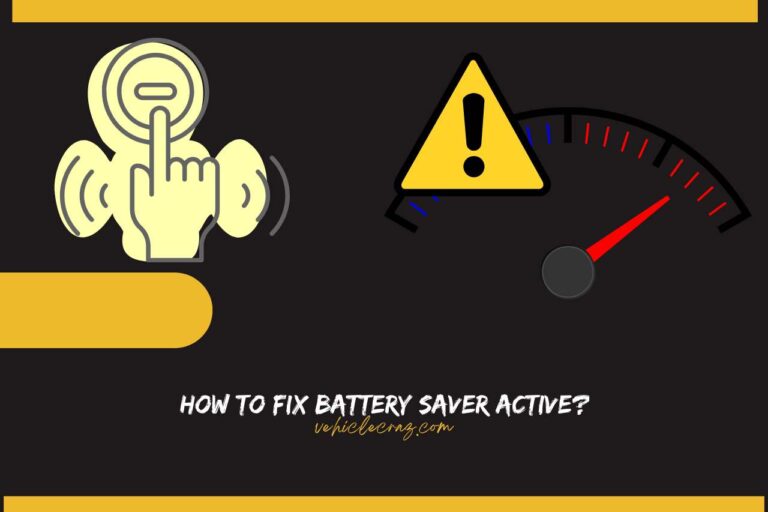What Fuse Controls the Fuel Gauge? Unlocking the Mystery
A fuel gauge is an essential instrument in any vehicle as it shows the amount of fuel in the fuel tank. Thus, it is worth knowing what fuse controls the fuel gauge, especially when the fuel gauge malfunctions.
Today, this discussion aims to help you find out the fuel gauge fuse in your vehicle. Moreover, you will be able to learn the signs of a bad fuel gauge fuse. So, if you are curious, move on to the following detailed paragraphs.
What Fuse Controls the Fuel Gauge?
Generally, the fuse that controls the fuel gauge is typically labeled in the vehicle’s fuse box or panel.
The specific fuse designation can vary depending on the make and model of your vehicle. Thus, in order to identify the fuse for the fuel gauge, you have to refer to the owner’s manual of your vehicle.
In the manual, there should be a fuse box diagram that indicates the location and purpose of each fuse.
Look for a fuse related to the instrument cluster, gauges, or fuel system.
If you can’t find the information in the manual, you may need to check the fuse box cover or consult with the vehicle manufacturer or a professional mechanic for assistance.
How Do I Find The Fuel Gauge Fuse?
You can find the fuel gauge fuse by going through the vehicle’s user manual. The following guide will explain the order of steps in detail.
Refer to the owner’s manual
Search for information on the fuse box location and locate the fuse specifically designated for the fuel gauge, or use terms like “gauges” or “instrument panel.”
Find the fuse box
Typically situated under the dashboard on the driver’s side, in the engine compartment, or in the trunk.
Identify the fuse
Once the fuse box is located, search for a fuse labeled “Fuel Gauge,” “Gauge Cluster”, or a similar term. If no specific label is found, check for “gauges” or “instrument panel.”
If you are not sure what the correct fuse is, visit a professional mechanic.
Signs you Need to Replace The Fuel Gauge Fuse
If you notice these signs, you will have to replace the fuel gauge fuse. So, keep notes of these symptoms, and then you can take prompt action.
Inoperative Fuel Gauge
If your fuel gauge is not functioning at all, it could be a sign that the fuse responsible for it has blown.
Fluctuating Fuel Reading
If the fuel gauge shows erratic readings, jumping between full and empty, it may be a result of a faulty fuse affecting its accuracy.
Dashboard Light Issues
Malfunctioning fuses can impact other dashboard lights, such as those associated with the gauges or instrument panel. If you notice issues with multiple lights, such as sudden flashing or not flashing at all, consider checking the fuel gauge fuse.
Other Electrical Malfunctions
Fuses often control multiple electrical components. If you experience problems with other electrical features in your vehicle, it could be linked to a blown fuel gauge fuse.
Fuse Inspection Reveals Damage
Physically inspect the fuel gauge fuse if you suspect there is a problem. If you observe a burnt or broken wire inside the fuse, it’s a clear indication that the fuse needs replacement.
Fuel Gauge Not Responding to Tank Refills
If your fuel gauge doesn’t register changes in fuel levels after refilling the tank, it may be a symptom of a faulty fuel gauge fuse.
Vehicle Stalling or Misfires
In some cases, a blown fuse affecting the fuel gauge may lead to issues with the fuel delivery system, causing the vehicle to stall or misfire.
Keep an eye out for these signs, and if you encounter them, you should inspect and replace the fuel gauge fuse as needed to ensure accurate fuel level readings and proper functioning of associated components.


I’m Alex, a seasoned mechanical teacher with over 20 years of hands-on experience in Australia. My passion for all things automotive has driven me to establish this blog, aiming to share my wealth of knowledge and expertise with fellow enthusiasts, DIYers, and anyone keen on understanding the mechanics behind the machines we rely on daily.






![Odometer Not Working After Battery Change? [Fixed]](https://vehiclecraz.com/wp-content/uploads/2023/09/12-1-768x512.jpg)
